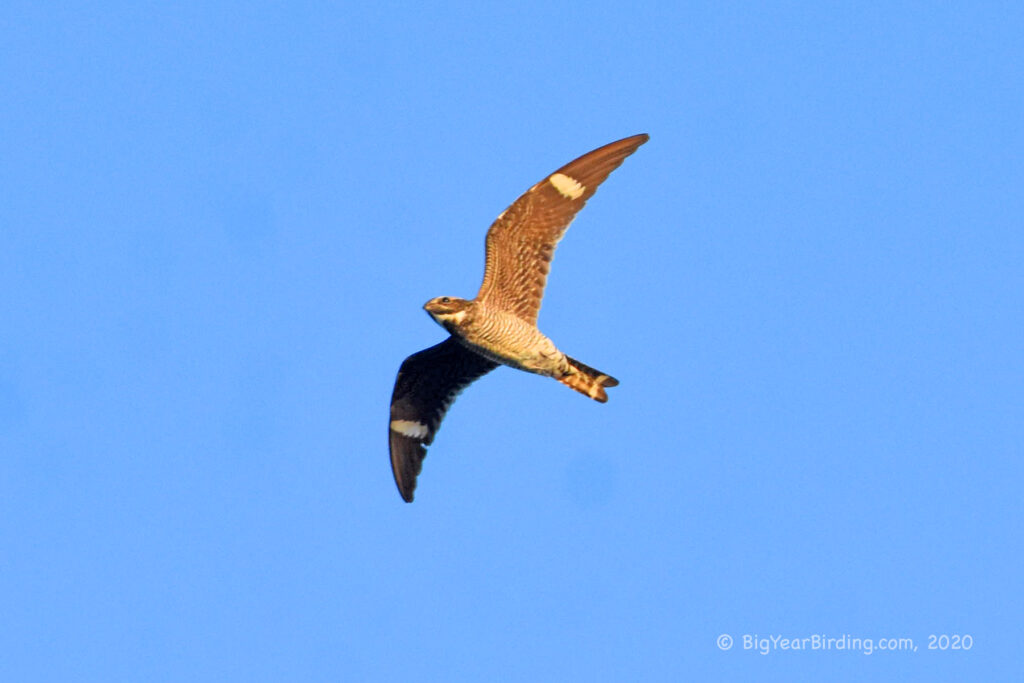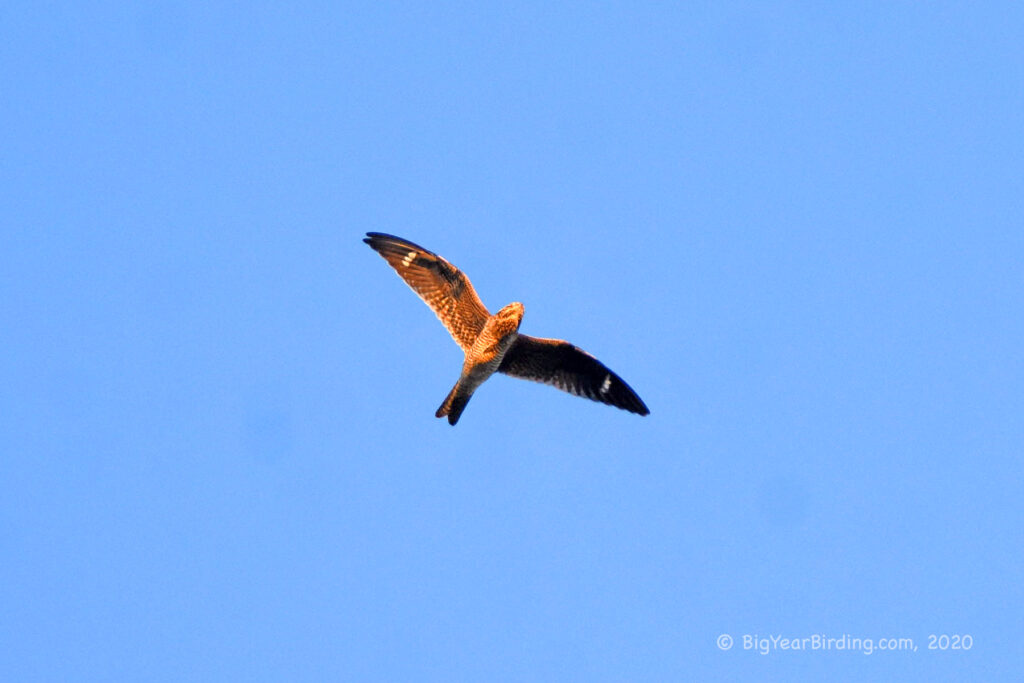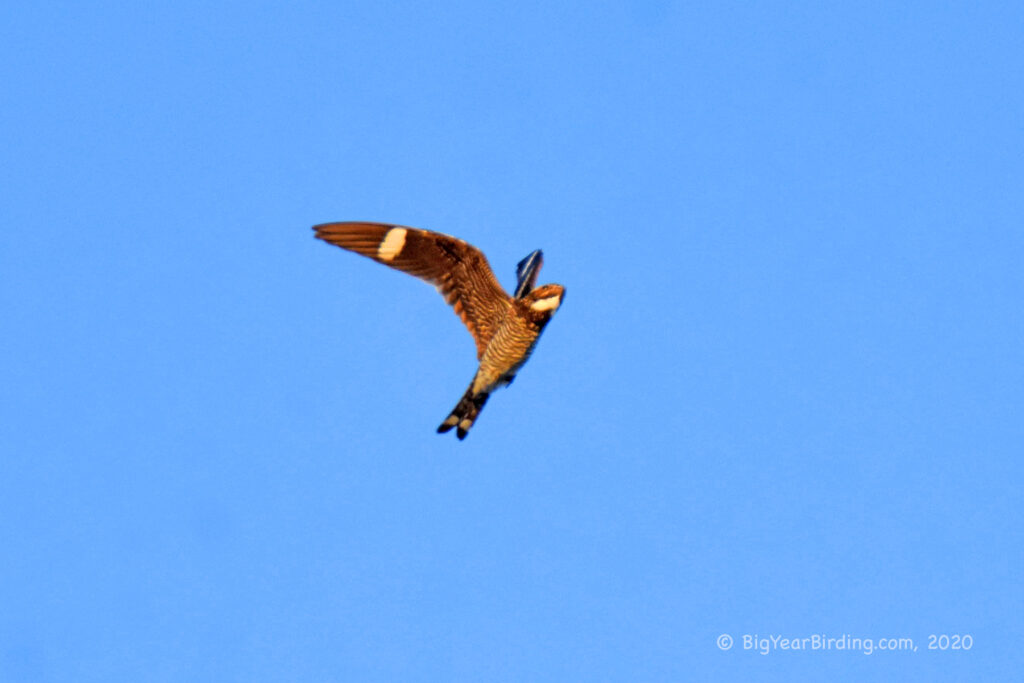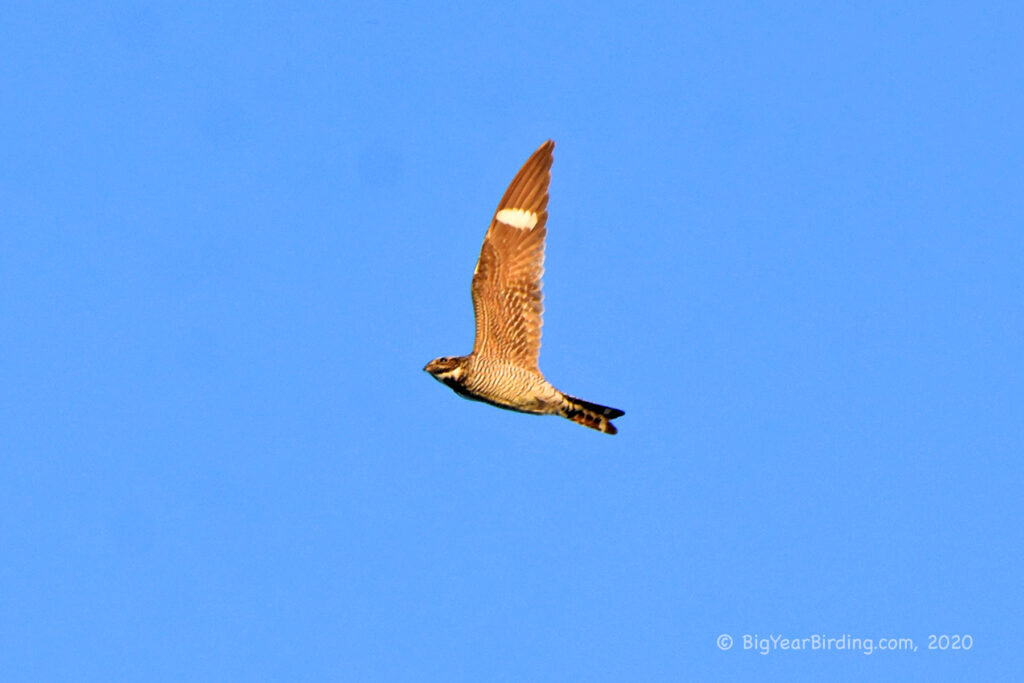
The Common Nighthawk (Chordeiles minor) is a medium-sized bird that belongs to the Caprimulgidae family. It is approximately 8 to 10 inches long, with a wingspan of about 21 to 24 inches, and weighs between 1.8 to 2.3 ounces. This species has a unique shape and flight pattern that sets it apart from other birds. Their long wings are pointed and narrow, while their tails are short and squared. Nighthawks also have a distinctive white patch on the throat and a buff-colored belly.

The Common Nighthawk is a migratory bird, breeding in North America and wintering in South America. They are widespread throughout the United States and Canada during the breeding season, but their numbers have declined in recent years due to habitat loss and other human-induced factors. During migration, nighthawks can be seen in large flocks as they travel to their wintering grounds.
One of the most distinguishing characteristics of the Common Nighthawk is its unique call, a distinctive “peent” that can be heard during the breeding season. These birds are also known for their acrobatic flight, which includes rapid wingbeats followed by a glide, creating a distinct “boom” sound as they dive through the air. Their flight pattern is often described as erratic, with sudden turns and dives as they catch insects on the wing.
In terms of habitat, the Common Nighthawk prefers open areas such as fields, meadows, and clearings. They are also commonly found in urban areas, nesting on flat rooftops or gravel roofs. During the breeding season, nighthawks lay two eggs directly on the ground, often in rocky areas or gravelly spots. They do not build a nest, but instead rely on their cryptic coloration to blend in with their surroundings.

Overall, the Common Nighthawk is a fascinating and unique bird species. Its distinctive shape, flight pattern, and call make it easy to identify in the field. As a migratory species, nighthawks play an important role in maintaining healthy ecosystems throughout North and South America.

